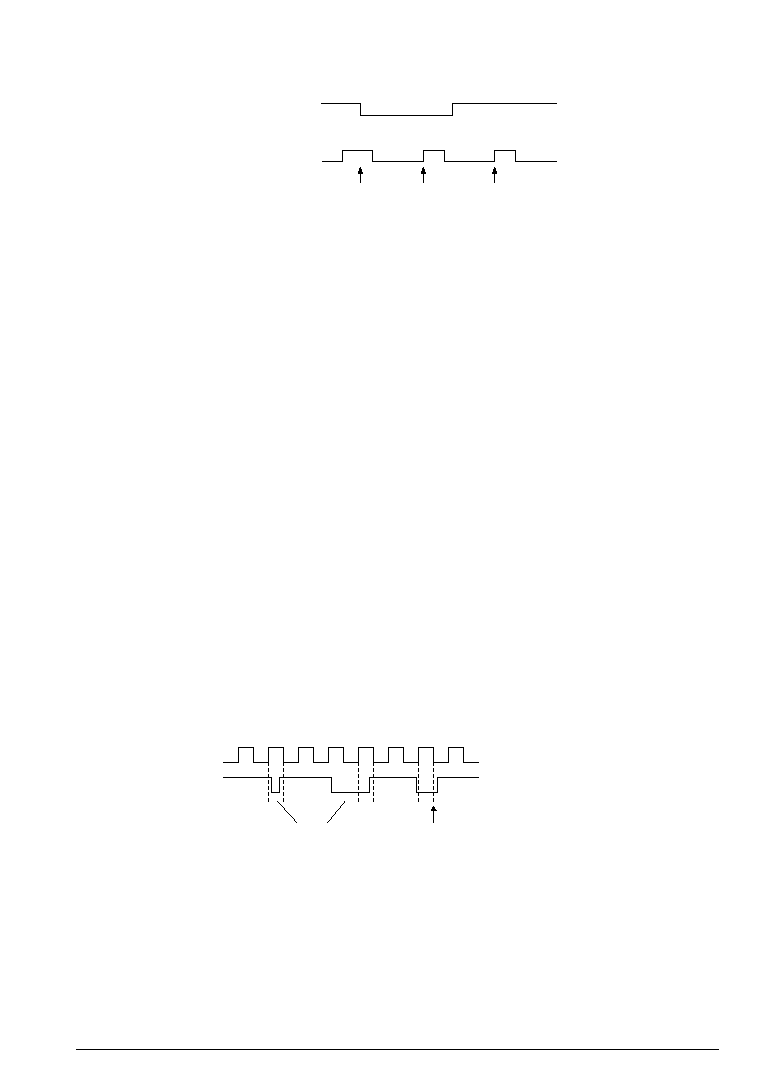- 您現(xiàn)在的位置:買(mǎi)賣(mài)IC網(wǎng) > PDF目錄98068 > S1C6N3B0D0A0100 MICROCONTROLLER, UUC54 PDF資料下載
參數(shù)資料
| 型號(hào): | S1C6N3B0D0A0100 |
| 元件分類(lèi): | 微控制器/微處理器 |
| 英文描述: | MICROCONTROLLER, UUC54 |
| 封裝: | DIE-54 |
| 文件頁(yè)數(shù): | 18/79頁(yè) |
| 文件大小: | 606K |
| 代理商: | S1C6N3B0D0A0100 |
第1頁(yè)第2頁(yè)第3頁(yè)第4頁(yè)第5頁(yè)第6頁(yè)第7頁(yè)第8頁(yè)第9頁(yè)第10頁(yè)第11頁(yè)第12頁(yè)第13頁(yè)第14頁(yè)第15頁(yè)第16頁(yè)第17頁(yè)當(dāng)前第18頁(yè)第19頁(yè)第20頁(yè)第21頁(yè)第22頁(yè)第23頁(yè)第24頁(yè)第25頁(yè)第26頁(yè)第27頁(yè)第28頁(yè)第29頁(yè)第30頁(yè)第31頁(yè)第32頁(yè)第33頁(yè)第34頁(yè)第35頁(yè)第36頁(yè)第37頁(yè)第38頁(yè)第39頁(yè)第40頁(yè)第41頁(yè)第42頁(yè)第43頁(yè)第44頁(yè)第45頁(yè)第46頁(yè)第47頁(yè)第48頁(yè)第49頁(yè)第50頁(yè)第51頁(yè)第52頁(yè)第53頁(yè)第54頁(yè)第55頁(yè)第56頁(yè)第57頁(yè)第58頁(yè)第59頁(yè)第60頁(yè)第61頁(yè)第62頁(yè)第63頁(yè)第64頁(yè)第65頁(yè)第66頁(yè)第67頁(yè)第68頁(yè)第69頁(yè)第70頁(yè)第71頁(yè)第72頁(yè)第73頁(yè)第74頁(yè)第75頁(yè)第76頁(yè)第77頁(yè)第78頁(yè)第79頁(yè)

S1C6N3B0 TECHNICAL MANUAL
EPSON
17
CHAPTER 4: PERIPHERAL CIARCUITS AND OPERATION (Input Ports)
Input interrupt programming related precautions
Factor flag
is set
Not set
Mask register
K port input
Active status
When the content of the mask register is rewritten, while the port K input is in the active status.
The input interrupt factor flag is set at .
Fig. 4.3.2.2 Input interrupt timing
When using an input interrupt, if you rewrite the content of the mask register, when the value of the
input terminal which becomes the interrupt input is in the active status (input terminal = low status), the
factor flag for input interrupt may be set.
For example, a factor flag is set with the timing of shown in Figure 4.3.2.2. However, when clearing the
content of the mask register with the input terminal kept in the low status and then setting it, the factor
flag of the input interrupt is again set at the timing that has been set.
Consequently, when the input terminal is in the active status (low status), do not rewrite the mask
register (clearing, then setting the mask register), so that a factor flag will only set at the falling edge in
this case. When clearing, then setting the mask register, set the mask register, when the input terminal is
not in the active status (high status).
4.3.3 Mask option
The contents that can be selected with the input port mask option are as follows:
(1) Pull-up resistor
An internal pull-up resistor can be selected for each of the four bits of the input ports (K00–K03).
Having selected "pull-up resistor disabled", take care that the input does not float. Select "pull-up
resistor enabled" for input ports that are not being used.
(2) Noise rejection circuit
The input interrupt circuit contains a noise rejection circuit to prevent interrupts form occurring
through noise. The mask option enables selection of the noise rejection circuit for each terminals.
When the noise rejection circuit is used, pulses shorter than 0.5 cycles of the sampling clock are
rejected as noise. To be certain interrupts are generated the input signal must have at least 1.5 cycles of
low width. Be aware that pulses between 0.5 and 1.5 cycles may or may not be regarded as noise
depending on the input timing.
Sampling clock
Input signal
Interrupt
Sampling clock frequency: S1C6N3B0
S1C6A3B0
fOSC/8
fDVIN/8
4 kHz when fOSC = 32 kHz
fDVIN: fOSC/12 (ceramic oscillation) or fOSC/6 (CR oscillation)
Interrupt occurs
Rejected as noise
Fig. 4.3.3.1 Noise rejection
相關(guān)PDF資料 |
PDF描述 |
|---|---|
| S1C6P366D0A0100 | 4-BIT, FLASH, 4.1 MHz, MICROCONTROLLER, UUC102 |
| S1C6P466D0A0A00 | MICROCONTROLLER, UUC140 |
| S1C6S2L7D | 4-BIT, MROM, 0.032 MHz, MICROCONTROLLER, UUC58 |
| S1C6S2A7F | 4-BIT, MROM, 0.08 MHz, MICROCONTROLLER, PQFP60 |
| S1C6S2B7F | 4-BIT, MROM, 0.08 MHz, MICROCONTROLLER, PQFP60 |
相關(guān)代理商/技術(shù)參數(shù) |
參數(shù)描述 |
|---|---|
| S1C-6-S | 制造商:GRIPCO 功能描述: |
| S1C7309X | 制造商:SAMSUNG 制造商全稱(chēng):Samsung semiconductor 功能描述:B/W CCD PROCESSOR |
| S1C7309X01 | 制造商:SAMSUNG 制造商全稱(chēng):Samsung semiconductor 功能描述:B/W CCD PROCESSOR |
| S1C88349 | 制造商:EPSON 制造商全稱(chēng):EPSON 功能描述:8-bit Single Chip Microcomputer |
| S1C88649 | 制造商:EPSON 制造商全稱(chēng):EPSON 功能描述:8-bit Single Chip Microcomputer |
發(fā)布緊急采購(gòu),3分鐘左右您將得到回復(fù)。